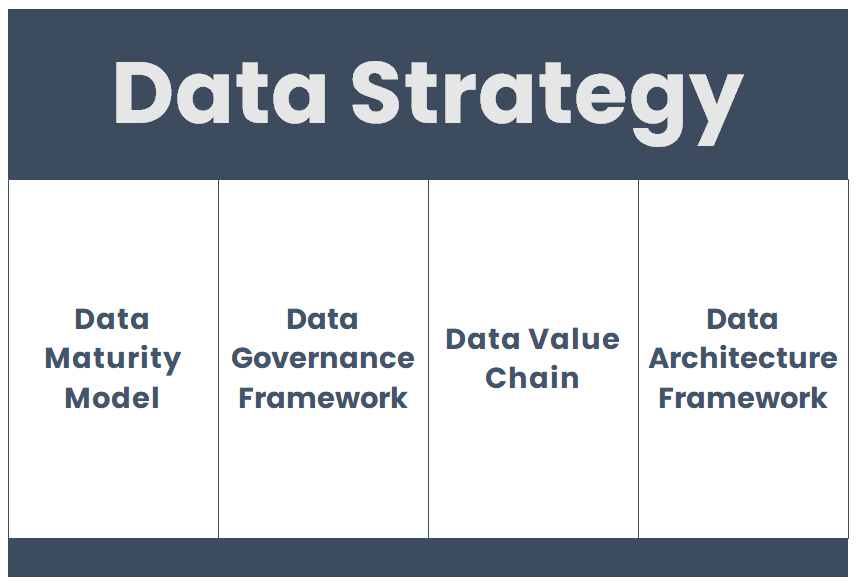Key Tenet of Data Strategy
Data Strategy is a crucial aspect of any organization’s business plan, as it helps to determine how data will be collected, stored, analyzed, and utilized to achieve business objectives. In recent years, the importance of data strategy has only increased, as organizations seek to leverage data to gain a competitive advantage and drive growth.
A key aspect of a successful data strategy is choosing the right framework to guide decision-making and implementation. In this blog, we will highlight some of the popular frameworks that organizations can use to develop a robust data strategy.

1. The Data Maturity Model:
The Data Maturity Model is a framework that provides a roadmap for organizations to move from basic data management practices to a mature, data-driven organization. The model consists of five stages: Initial, Structured, Managed, Innovative, and Optimized. Each stage represents a higher level of data maturity and provides organizations with guidance on the steps they need to take to progress to the next stage.
2. The Data Value Chain:
The Data Value Chain framework provides a comprehensive view of the entire data value creation process, from data acquisition to data utilization. The framework consists of six stages: Data Sources, Data Collection, Data Management, Data Analysis, Data Insights, and Data Utilization. By following this framework, organizations can ensure that they are maximizing the value of their data assets at every stage of the value chain.
3. The Data Governance Framework:
The Data Governance Framework is a set of policies, procedures, and processes that organizations can use to ensure that their data is being managed in a consistent, secure, and ethical manner. The framework covers areas such as data privacy, data security, data quality, and data retention. By implementing a data governance framework, organizations can ensure that their data assets are being used effectively and efficiently, while also protecting sensitive information.
4. The Data Architecture Framework:
The Data Architecture Framework provides a high-level view of the organization’s data landscape and outlines how data will be collected, stored, and processed. The framework covers areas such as data modeling, data storage, data integration, and data access. By following a data architecture framework, organizations can ensure that their data assets are being managed in a way that supports their business objectives and allows for efficient data analysis.
Conclusion
Organizations that seek to maximize the value of their data assets should consider implementing one of these popular frameworks to guide their data strategy. By doing so, they can ensure that they are collecting, managing, and utilizing their data in a manner that supports their business objectives and helps to drive growth and competitiveness.
Here at Niograph, we offer specialised cloud-first Data and AI services that are customized to suit your business needs, current and future. We help you harness your data assets for optimum results and sustainable growth and competitiveness. Reach out to our expert team today for a free consultation on how you can benefit from our data consulting and data intelligence services.

